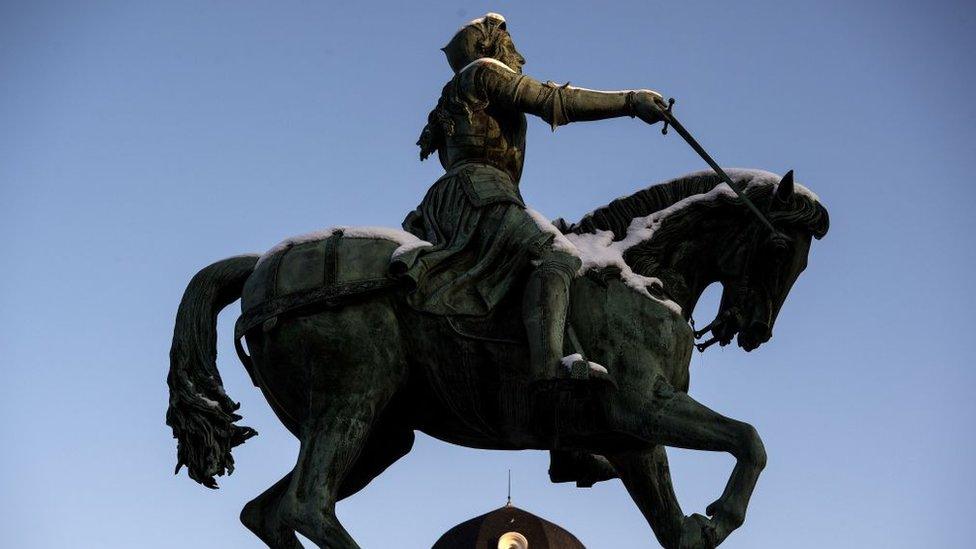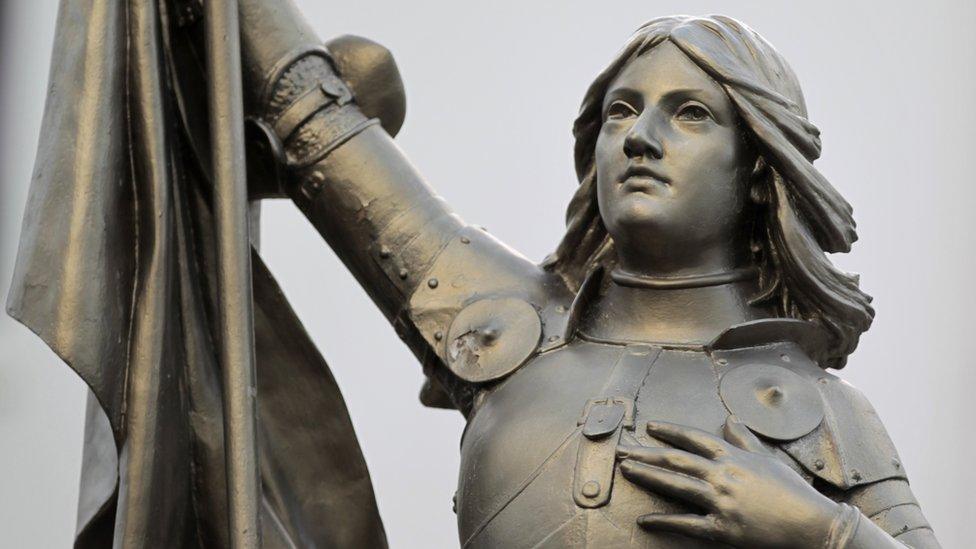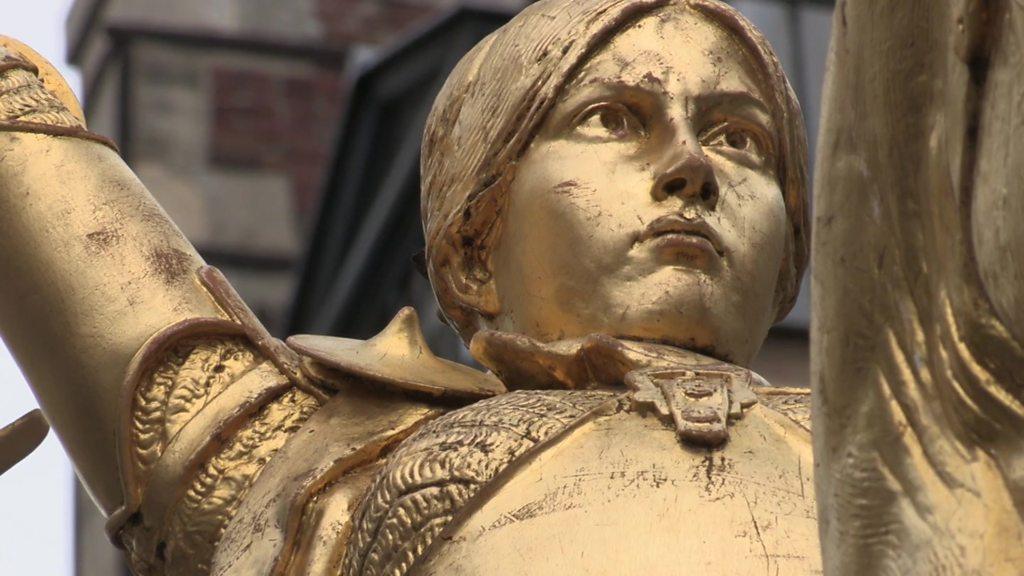Mixed-race Joan of Arc draws abuse from French far-right
- Published

Joan of Arc is also known as "the Maid of Orleans" for her role liberating the city in 1429
Authorities in the French city of Orléans are investigating racist tweets about a teenager set to play Joan of Arc.
The city chose Mathilde Edey Gamassou, 17, on Monday to act as the folk heroine at annual celebrations in May.
But a number of tweets and far-right websites have condemned the pick because of the teenager's mixed-race heritage.
Joan of Arc is celebrated throughout France, but is also a far-right symbol.
On Friday morning, the public prosecutor in Orléans announced there would be an investigation into two racist tweets.
The first compared the teenager to a baboon, while the second posted images of bananas in response.
The account that posted the baboon comparison has since been deleted.
What's the celebration?
The city of Orléans picks a teenager to play Joan of Arc every year.
Joan of Arc liberated the city from England in 1429, and the chosen teen acts as the historical figure in a parade on 8 May.
The selected girl must have lived in Orléans for at least 10 years, be a practising Catholic, be educated in an Orléans high school and must dedicate her free time to others.

Then-economy minister Emmanuel Macron shakes hands with the Joan of Arc impersonator in 2016's parade
On Monday, the Orléans Joan of Arc Association chose Mathilde, who has a Polish mother and a father from Benin.
The city's mayor, Olivier Carré, supported the choice on Twitter, saying it was an honour to present her to the city in a special ceremony.
Allow X content?
This article contains content provided by X. We ask for your permission before anything is loaded, as they may be using cookies and other technologies. You may want to read X’s cookie policy, external and privacy policy, external before accepting. To view this content choose ‘accept and continue’.
What's the controversy?
Far-right supporters quickly voiced their anger online.
One Twitter user complained that the choice was designed to enforce a multicultural ideology.
A comment piece on the far-right website Résistance Républicaine meanwhile complained that next year Joan of Arc would wear a burqa.
The French gender equalities minister, Marlène Schiappa, tweeted her condemnation of the online abuse, saying racial hatred had no place in France and fully backing Mathilde.
Allow X content?
This article contains content provided by X. We ask for your permission before anything is loaded, as they may be using cookies and other technologies. You may want to read X’s cookie policy, external and privacy policy, external before accepting. To view this content choose ‘accept and continue’.
On Friday, the public prosecutor announced a preliminary investigation into the racist tweets, on the grounds of incitement to racial hatred.
Authorities will have to trace the true identity of the tweeters through their accounts, and will contact Twitter for help.
The charges carry a maximum prison sentence of five years.

Who was Joan of Arc?

A statue of Joan of Arc outside the Front National headquarters in Nanterre
Joan of Arc, known as the Maid of Orléans, was born in 1412.
She claimed to have visions telling her to help France take back lands from England during the Hundred Years' War (1337-1453).
In 1429, she was sent to the siege of Orléans as part of a relief mission. She was celebrated for her role when the city was liberated nine days later.
The lifting of the siege was seen as a turning point in the war, which led to a series of victories and culminated in July with the coronation of the French King Charles VII, whom Joan had supported.
However, the next year she was captured and handed over to the English. In 1431, she was burned at the stake for alleged heresy, dying at the age of 19.
Since then, she has been venerated throughout France as a hero of national resistance and liberation.
In particular, however, she is feted by the far-right, including the Front National.

- Published1 May 2017

- Published11 April 2015
